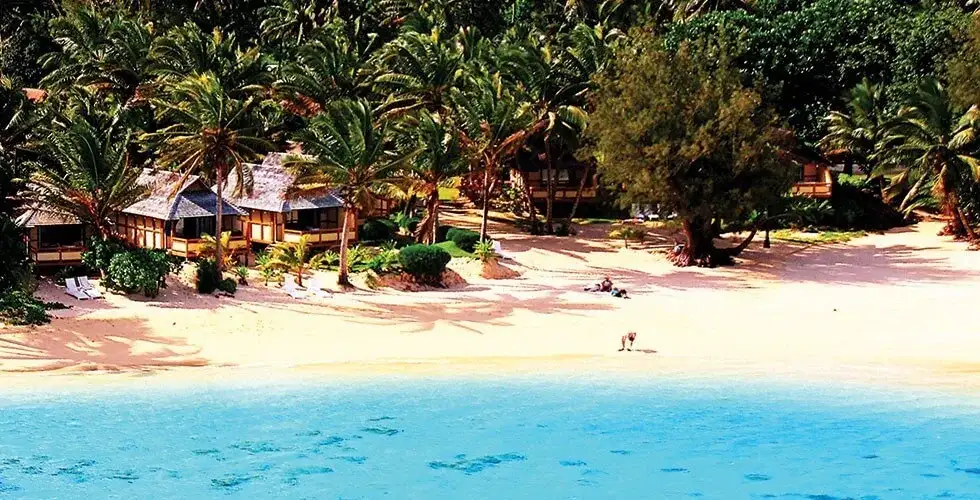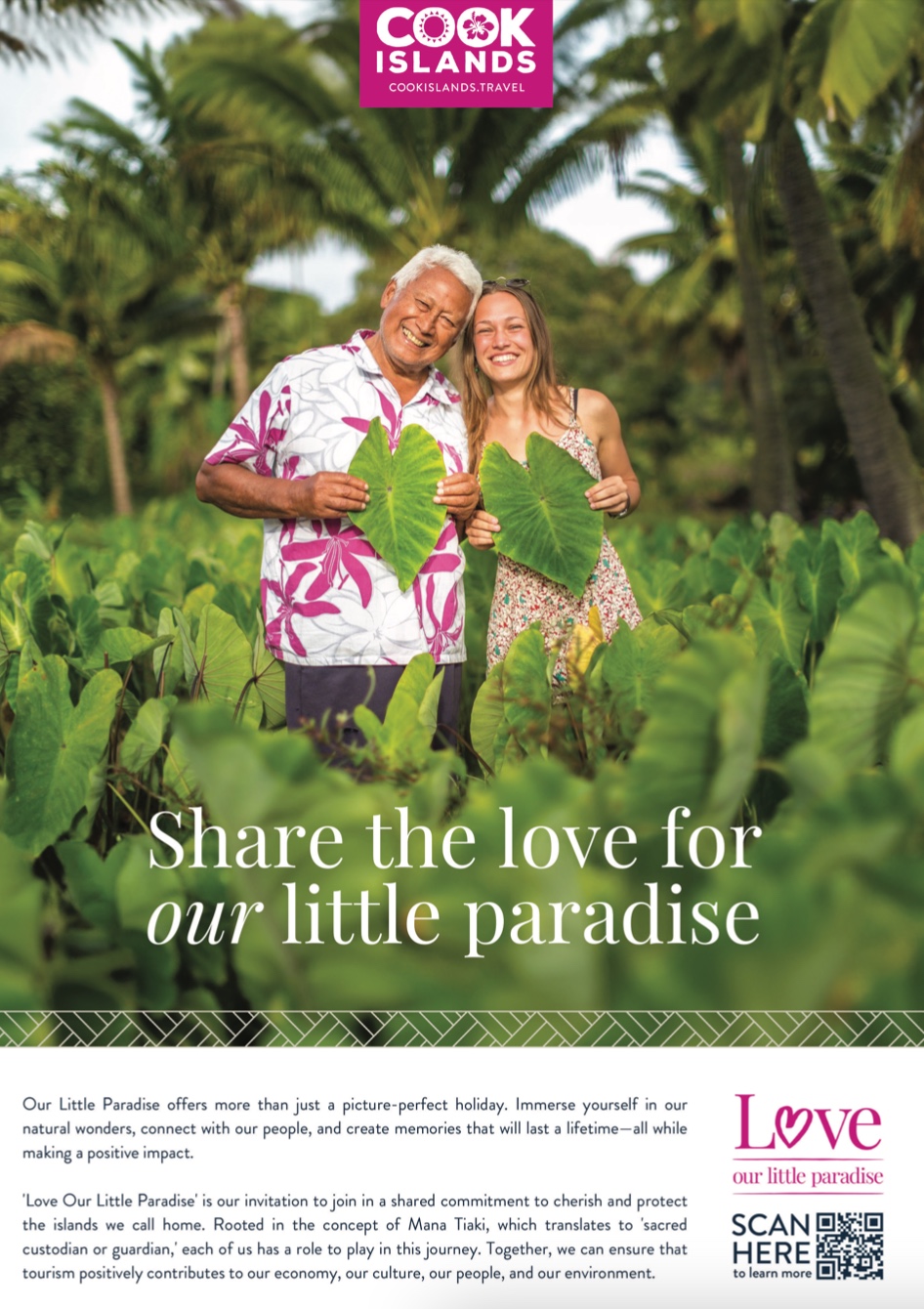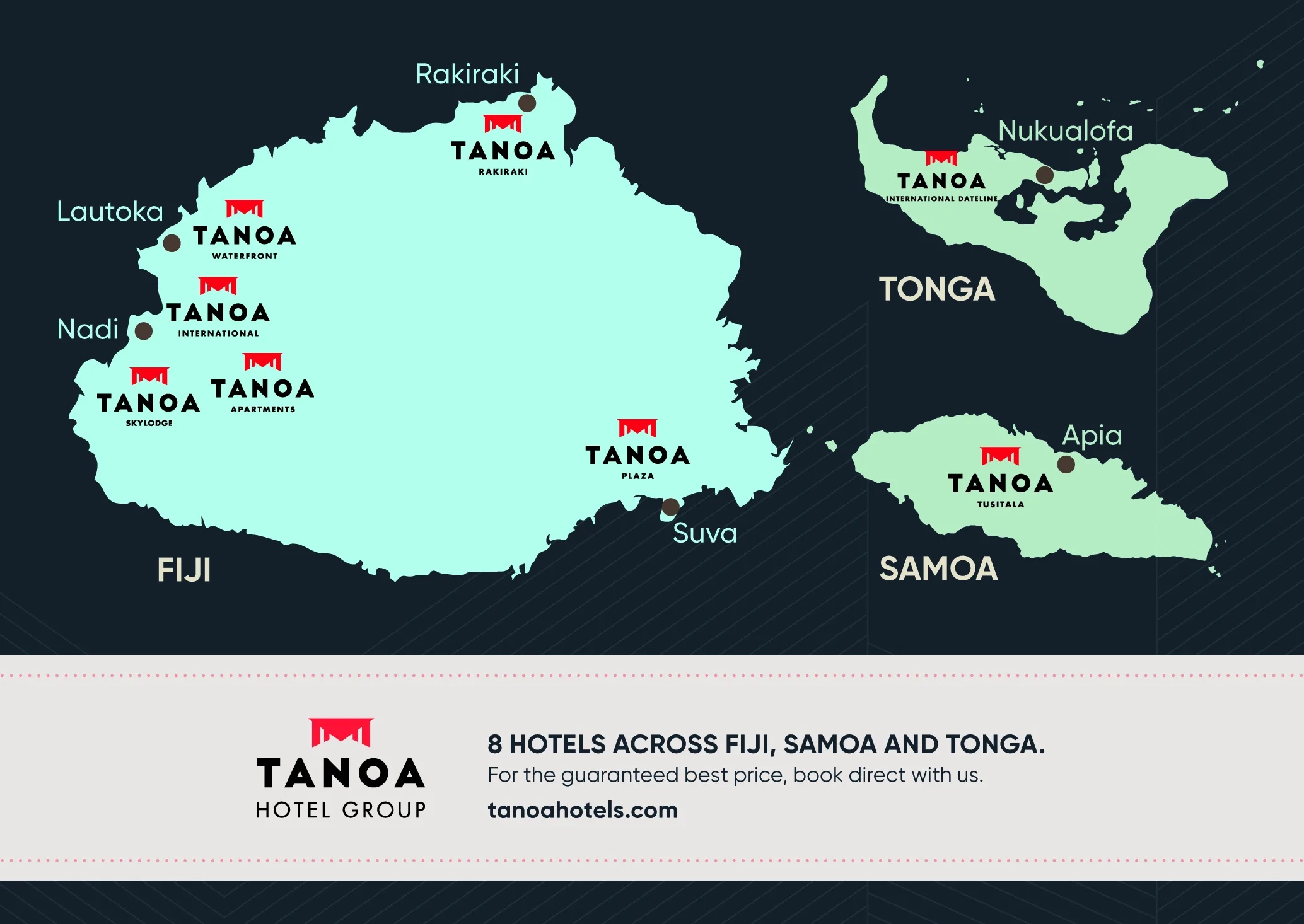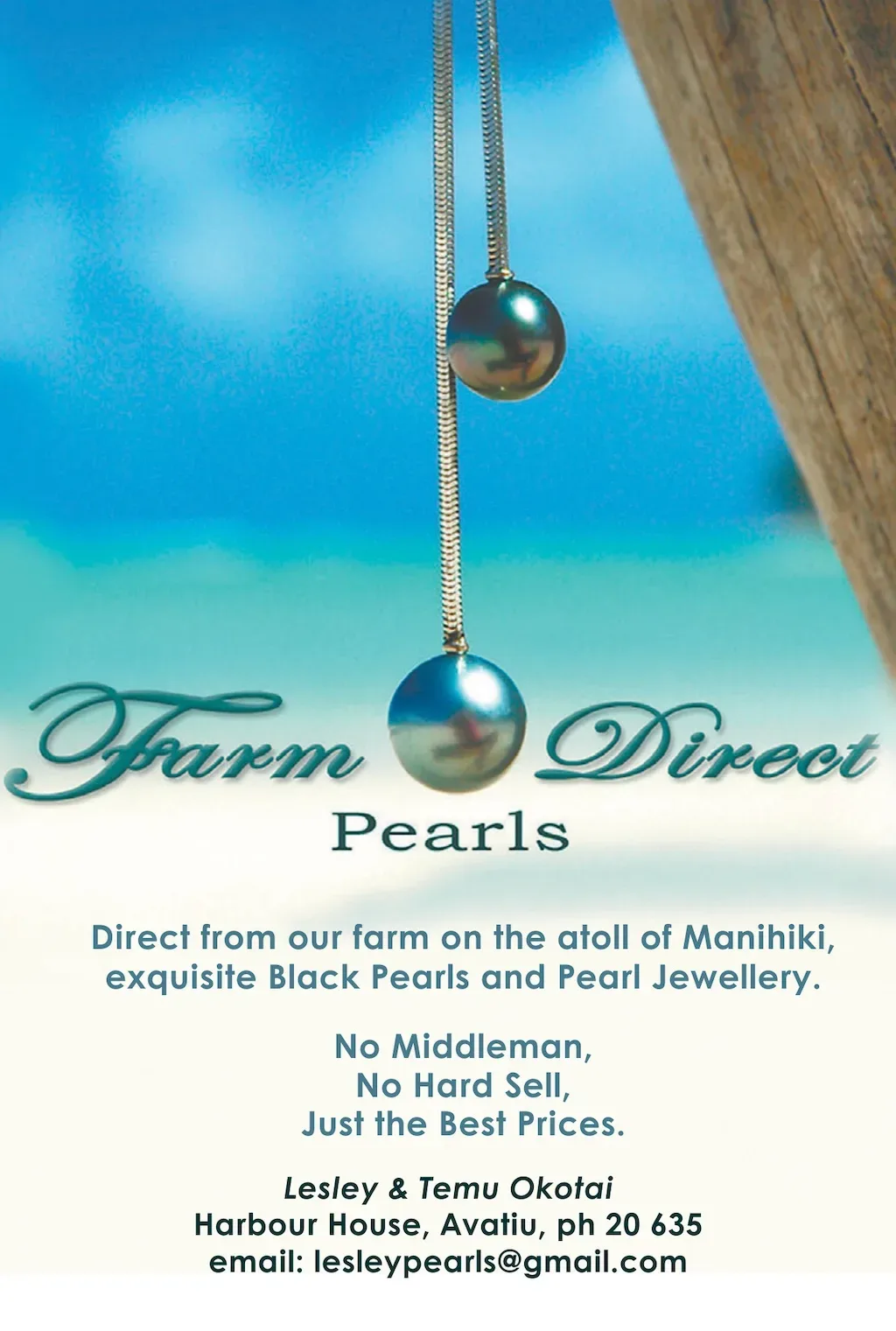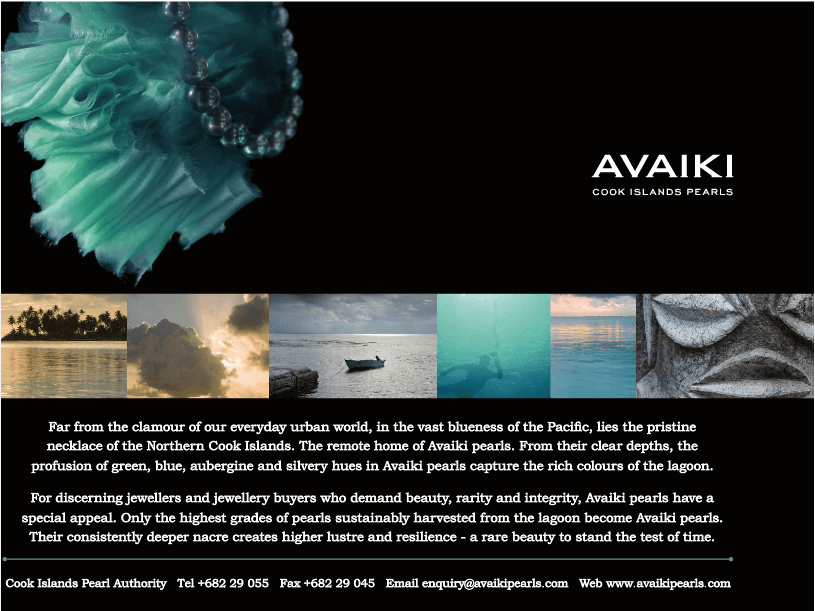RAROTONGA
With its jagged peaks and sparkling aquamarine lagoon, Rarotonga is a jewel in the Pacific Ocean. This beautiful Island was one of the last in the Cook Islands to be visited by European ships and has since become a favourite of sailors from all over the world. Rarotonga is surrounded by a lagoon which extends several hundred yards to the edge of a fringing reef The lagoon is a focal point of interest for visitors to Rarotonga. As the largest, most populated and main island, Rarotonga has most of the hotels and tourist activities and services. There are some excellent resorts on the island, including the Edgewater, and Rarotongan Sunset.
The island is only 32 kilometres in diameter and is easily explored by bus (leaving every half hour from Avarua), motorbike, bike and even foot. Beaches and accessible reef are within easy reach and swimming is safe in most places, but the most popular beaches are Muri Beach and Titikaveka.
Surfing is growing in popularity, especially near the wreck of the Matai and at Avatiu, Avarua and Matavera. Windsurfing is particularly good at Muri Beach and the lagoon at Nagatangiaa.
The capital, Avarua, is the main administrative, commercial and service centre, with a lot of tourist attractions. For example, the National Cultural Centre shares a compound with the National Library and Museum and has some excellent displays of the islands’ history and handicrafts. The National Library and Historical Society Museum are also in the town and worth visiting.
Artwork and crafts can be viewed and purchased at the Women’s Handicraft Centre, Akatikitiki Art Gallery, Island Crafts and Perfumes of Raratonga, as well as in artists’ homes and several of the hotels or small shops. Also not to be missed is the market on the waterfront at the western end of Avarua. This is open every day except Sunday.
Avarua also has many other shops, including some duty-free shops that sell clothes, food and tourist paraphernalia. It also has well-stocked supermarkets.
With religion playing such an important part in the people’s lives, the churches in Rarotonga are an attraction of their own. The old London Missionary Society schoolhouse, built in 1845, has been restored and is now an art gallery and sales outlet for Cook Island black pearls and jewellery and local arts and crafts. The Takamoa Mission House, believed to be the second oldest building in the South Pacific, was built as a school in 1842 by the London Missionary Society. The Avarua Cook Islands Christian Church was built in 1855 of coral and lime and has an interesting churchyard. Other churches around the island are also interesting edifices, made as they are from coral.
Archaeological remains are also dotted around the island and are easily accessible. The palace of Makea, Pare O Tane, is at Taputapuatea in Avarua.
The Arai-Te-Tonga is one of the most sacred spots on the island, being home to the royal court in pre-European times; the stone structures (Koutu) were used for the investiture of high chiefs, annual tribal feasts and the ‘presentation of the first fruit’.
The ‘Great Road of Toi’, the Ara Metua, is an all-weather inland road, made in part with paved stones, that almost encircles the island, and was built 1000 years ago. There is also the Black Rock or Tuoro, which is the traditional point of departure for souls as they commenced their journey back to the fatherland. It’s now a popular swimming place.
There are a number of treks on Rarotonga, from easy walks to strenuous hikes. One of the more popular is a four-hour guided walk across the island that stops at the Needle, a rock formation with fabulous views. Papua Waterfall at Vaimaanga, the largest waterfall on the island, dropping into a large pool. Visitors can also walk through the Takitumu Nature Reserve with its abundant plant and bird life.
More and more divers are coming to the Cook Islands and top quality dive operations are available. Diving features visibility up to 200 feet, a spectacular drop-off, canyons, caves and wrecks. The most popular places are the Ngatatangiia Swim through, Matavera Drop off, Mataora Wreck, Pappu Canyon, Sand River and Koromiri Coral Garden. Fishing is another growing sport and ranges from night fishing with the locals to serious game fishing. There are a number of companies that offer fishing charters for both novices and experienced fisher people for deep sea fishing, saltwater fly fishing and light tackle game fishing. Game fishing starts right outside the Avatiu harbour, which is where most of the charter boats are based.
Sailing is also available at the Rarotonga Sailing Club, based at Avatiu Harbour. This is usually home to most visiting yachties, too.
Whale watching tours are available from July to September as humpback and pilot whales ply the waters and calve here. While the whales can be seen from shore, some tours go right up to the curious whales.
CAPITAL CITY
Avarua is the main town, situated on Rarotonga, and is the centre of development on the island.
AITUTAKI
Like Rarotonga, Aitutaki has a large range of activities but has a very different ambience from its larger neighbour. It’s lush tropical gardens and pristine beaches are very special, as are the friendly people. Visitors, who cannot stay on the island, often find it very worthwhile to take a day trip from Rarotonga.
The Aitutaki lagoon is arguably one of the most beautiful in the world and abounds with marine life to delight the snorkeller, particularly the iridescent giant clam. Due to the shallow lagoon, snorkelling is easy. The most popular swimming, snorkelling and picnic spots are on the small islets to the southeast, each of which has a legend associated with it, such as One Foot Island.
Sailing, diving and fishing (fly casters and light tackle anglers) are all available. For those wanting to explore the island, there is a thirty-minute trek to the highest point, behind the hospital, that has excellent views. The Te-Poaki-O-Rae (stone of Rae) is a marae with volcanic rocks arranged in rows facing the main pillar. Other maraes are nearby.
Vaipae and Tautu Villages are distinctive for their old coral and lime churches that add an extra dimension to worshipping.
Visitors are welcome at the Research Station of the ministry of Marine Resources, which is open daily and has species of giant clams and baby sea turtles for visitors to see and learn about.
The villages have handcrafts, souvenirs and island-style fashions for sale.
In the main village of Arutanga, a basic market sells all the things you’ve never wanted or needed but it is charming enough. Accommodation in Aitutaki ranges from budget to luxury. The Aitutaki Lagoon Resort offers private accommodation in an isolated corner of the Island. On the eastern side of Aitutaki, the Aitutaki Lodges offer six self-contained studio chalets on the edge of a lagoon with verandahs that face the rising sun. The Maina Sunset Motel is on the west side near the town area of Arutanga, Rino’s Apartments offers four garden units with balconies, separate bathrooms and full cooking facilities. Further, along from Ralphies Bar and Grill towards the north end of the island, the Sunny Beach Lodge is also good value. In Arutanga itself the Tupuna Cafe provides a good venue for breakfast. The high point of any visit to Aitutaki is a lagoon cruise. Several operators provide a lagoon cruise and most boats go to Tapuatae, One Foot Island, at the far south-eastern corner of the huge lagoon.
ATIU
The island of Atiu is the only other island that more than the occasional tourist visits, though there is only one small hotel there. But the beaches are beautiful and include Oravaru Beach, where Captain Cook was thought to the first land.
The island is only small, and it’s easy to see all there is in the way of plantations, crops, fruit trees, forest, the makatea and archaeological ruins. Atiu coffee is famous and sold throughout the Islands and exported.
While there are many beautiful beaches for lazing and collecting shells on, swimming isn’t easy, apart from the deeper water at Taunganui Harbour. However, at low tide there is some good snorkelling at Takauroa Beach and the Coral Garden, where tropical fish are trapped by the tide. Oneroa Beach has lovely shells.
Birdwatchers will love this raised coral island, which has a greater variety of land birds than any other island. They can be found nesting on the magnificent cliffs and pinnacles and in caves. The Anatakitaki Cave is spectacular in itself and for the Atiu swiftlet, which issues clicking sounds for echolocation.
The Vai Momoiri Track wanders through the beautiful scenery of the island and there are many caves in the makatea that can be explored.
Crafts are an important part of the women’s lives; they are very proud of their tivaevae, the colourfully patterned bedspreads, hangings, handbags and other accessories.
Atiu is also the home of tumunu, or homebrew and visitors often join in the elaborate ceremony that accompanies a drinking session.
The best place to stay is the Atiu Motel situated at the southern end of the Island.
MAUKE
Located in the south-eastern corner of the Cook Islands lies Mauke, a raised atoll named after its legendary founder, Uke. Encircled by the characteristic fossilised cliffs of makatea, Mauke is virtually flat with its centre about 100 feet (30 m) above sea level. The island has a circumference of 12 miles (18 km). Mauke has a special atmosphere. Its people cleave to the old customs of hospitality – the ui tupuna – and they are very friendly to visitors.
People from overseas need to adjust to a different pace and style. Shops are few and far between, are often closed and the range of goods on offer is limited. There are no cafés or restaurants, milk has to be bought in powder form in cans and fresh home-baked bread comes from an old gentleman in Ngatiarua village who bakes loaves in a wood-fired oven.
Mauke offers numerous coves and white beaches as well as caves in which to swim. Energetic travellers can enjoy hiking through the luxuriant jungle interior. Probably the best way to explore Mauke is by rented bicycle.
Visitors can stay at either the Mauke Cove Lodge, a guest house which is an old coral limestone cottage, or at the Tiare Holiday Cottages.
OTHER SOUTHERN ISLANDS
Mangaia Island is known for its arts and crafts, including a unique adze, and it’s interesting caves. Accommodation options include Babe’s Place on the west coast and the Ara Moana Hotel on the east coast.
Mitiaro has blue lagoons and white sandy beaches but is far from the usual tourist trail. It is one of the largest islands in the Cooks group; it rises deep from the ocean to 4500m and is fringed by fossilised coral 20 to 4o ft high. The centre is almost flat, quite swampy and contains two freshwater lakes. Beaches are limited on Mitiaro but there is crystal clear rock pools ideal for a cooling swim. Mitiaro is definitely a place for visitors who want to put their feet and unwind with a good book.
The only true atoll of the Cook Islands is Manuae.
NORTHERN ISLANDS
Not all northern islands have accommodation or tourist facilities but are slowly opening up to tourists, particularly yachties.
However, Penrhyn has a natural harbour and is a commercial centre for the northern islands and is easily accessible. It is famous for its natural coloured pearls. Visitors will enjoy the archaeological sites that dot the island. Rakahanga is a game fishing paradise, and host to the annual tuna competition. Manihiki is famous for its ‘black’ pearls; they are actually grey, blue, and green and glow with many colours of the rainbow.
Pukapuka, which has a reputation for romance, is tiny but compelling, with excellent swimming, snorkelling and handicrafts, particularly the fine weaving of mats.
Suwarrow Island is the original Treasure Island, where buried chests full of treasure from Spanish galleons were found last century. New Zealand author and recluse, Tom Neale, lived there as a hermit for six years and wrote An Island to Oneself about his experience. The island is now a national park due to its sea-bird breeding grounds and is uninhabited except for a caretaker. Suwarrow is a very special place for yachties to visit, with the magnificence of the birds and its large and beautiful lagoon.
WILDLIFE
The Cook Islands’ geographic isolation means there is a variety of wildlife not found anywhere else, including an abundance of native ferns, flowering plants, fish, lizards, insects and birds. The birds include the chattering kingfisher, Mangaia kingfisher, red-tailed tropic bird, kakerori, Atiu swiftlet (kopeka) and blue lorikeet. Humpback whales use the warm Cook Islands waters to calve after migrating north from their Antarctic feeding grounds and can be seen from July to October. Some islands are also nesting grounds for turtles.
NATIONAL AND MARITIME PARKS
Takitumu Conservation Area on Rarotonga, managed by traditional landowners, is home to the endangered Rarotongan Flycatcher and the Giant Kingfern and ‘gentle nature walk’. Suwarrow Island is the Suwarrow National Park, an important seabird breeding area in the South Pacific. Numerous large and interesting coral knolls also spot the lagoon.

